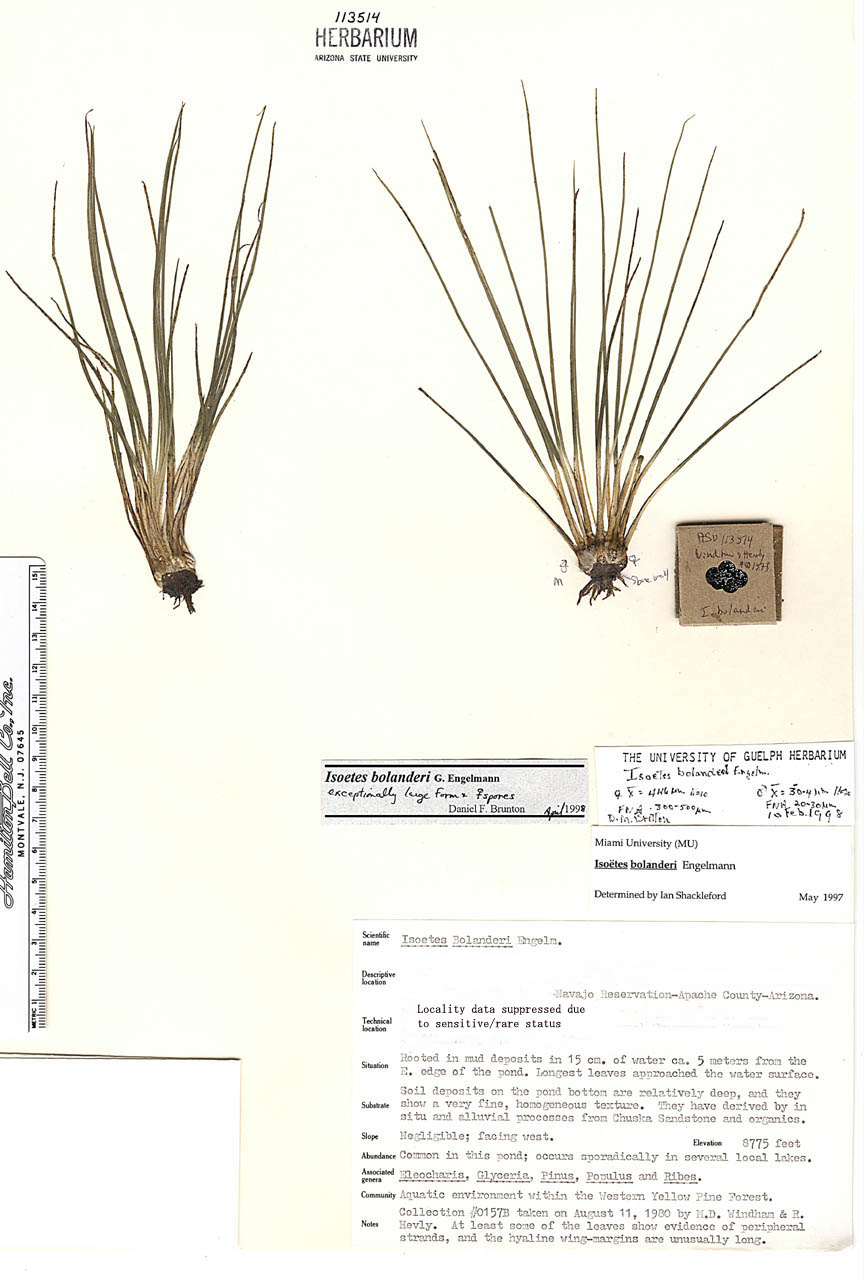Isoëtes
|
Family: Isoetaceae |
PLANT: Perennial herbs, heterosporous. ROOTS: adventitious, arising from between the stem lobes, unbranched or branched. STEMS: usually 2-lobed, stout, short, fleshy, cormlike, with reduced internodes, lobed. LEAVES: usually numerous, deciduous, appearing tufted, linear, tapered to the sharply pointed tip, glabrous, hollow (with 4 longitudinal chambers) with a single midvein, the base broadened and convex (spoon-shaped), bearing 1 sporangium in a shallow pit on the adaxial (inner) side and a thin scale (ligule) adjacent and distal to the sporangium. SPORANGIA: of 2 types, usually on the same plant, thin-walled, lacking an annulus, breaking open irregularly through decay, partially covered along the margin by a flap of tissue (velum), some with numerous megaspores, others with numerous microspores. MEGASPORANGIA: with 50-300 megaspores. MEGASPORES: relatively large, much bigger than the dust-like microspores, trilete, globose. MICROSPORANGIA: with 150,000 or more microspores. MICROSPORES: monolete, bean-shaped. GAMETOPHYTES: reduced, developing inside the spores, the archegonia and antheridia protruding from the spore wall. —1 genus, ca. 150 spp., nearly worldwide. NOTES: (Greek for “equal” and “year” [evergreen]). Species of quillworts are often overlooked in the field, because of their superficial similarity to some aquatic species of grasses, sedges, and rushes. REFERENCES: Windham, M. D. and G. Ytskievych. 2009. Vascular Plants of Arizona: Isoëtaceae. CANOTIA 5 (1): 27-29. Perennial, mostly aquatic or amphibious herbs with linear, grass-like lvs; x=11. 100+, cosmop. Hybrids are not infrequent. Some such are I. إatonii R. Dodge = I. echinospora נengelmannii; I. ئoveolata A. A. Eaton = I. riparia נtuckermanii; and I. بarveyi A. A. Eaton = I. lacustris נtuckermanii; I. بickeyi W. C. Taylor & Luebke = I. echinospora נlacustris. Gleason, Henry A. & Cronquist, Arthur J. 1991. Manual of vascular plants of northeastern United States and adjacent Canada. lxxv + 910 pp. ©The New York Botanical Garden. All rights reserved. Used by permission. |

